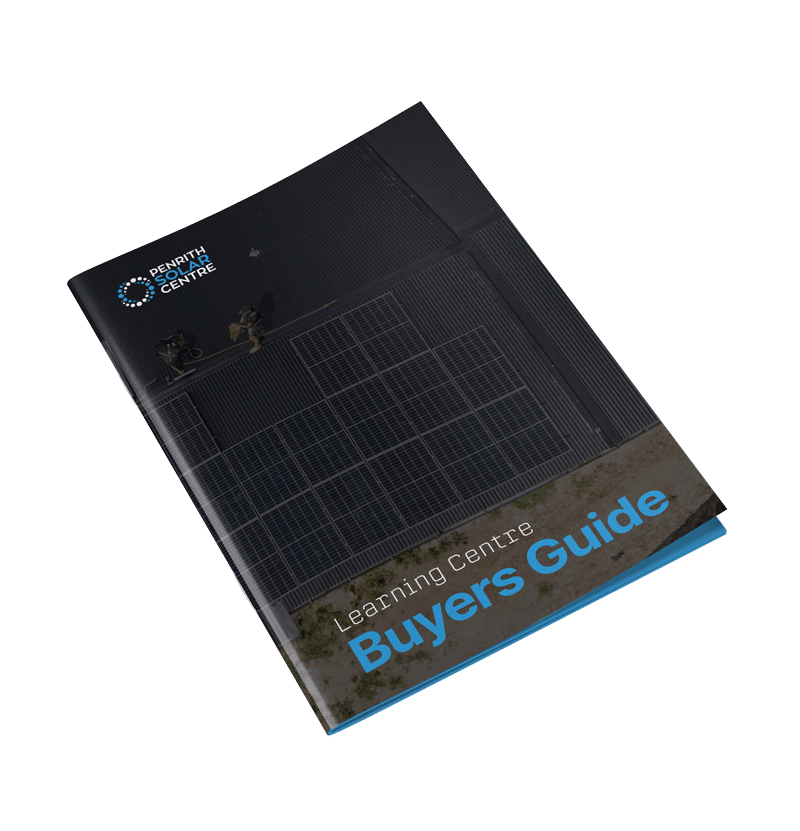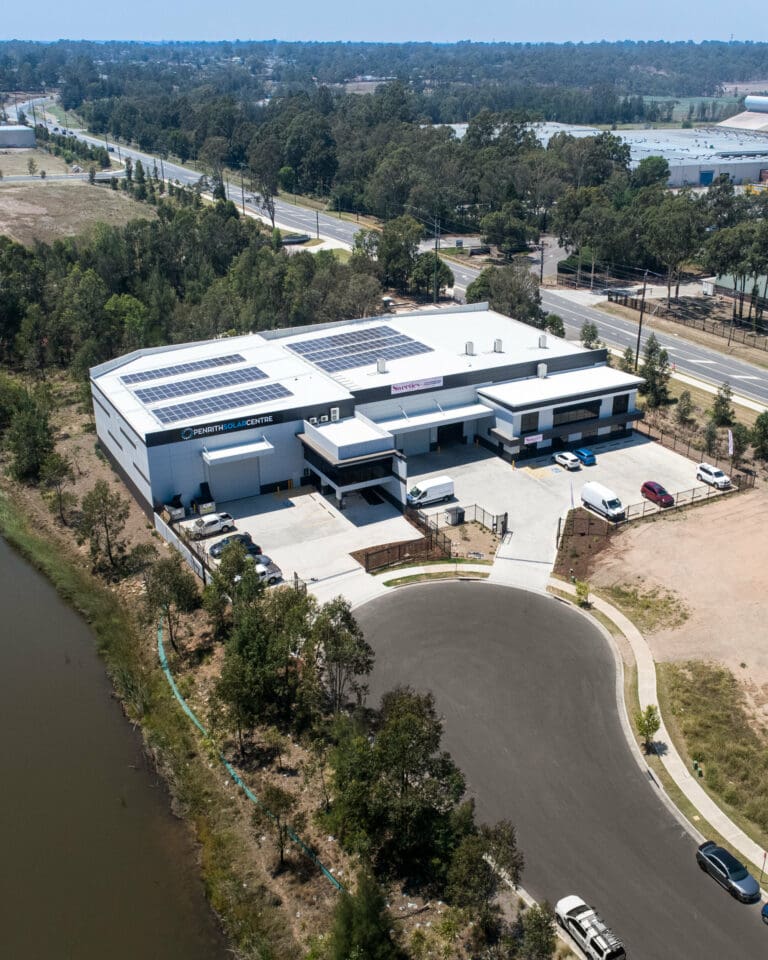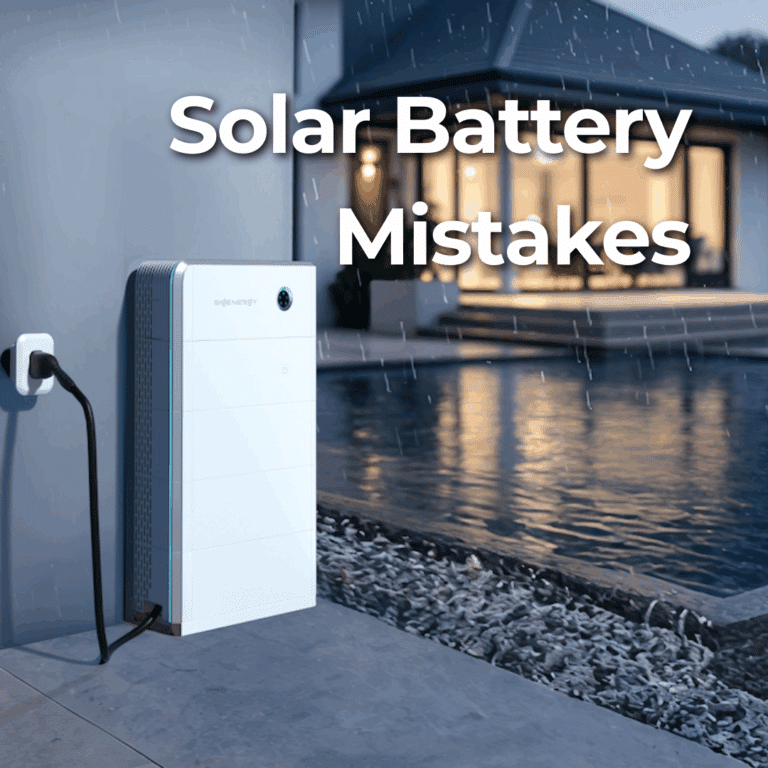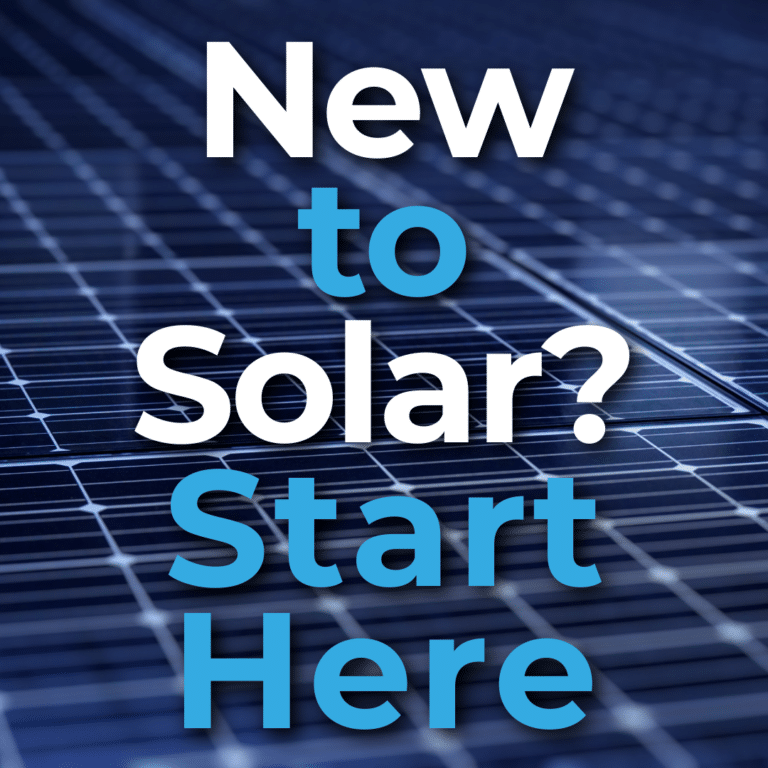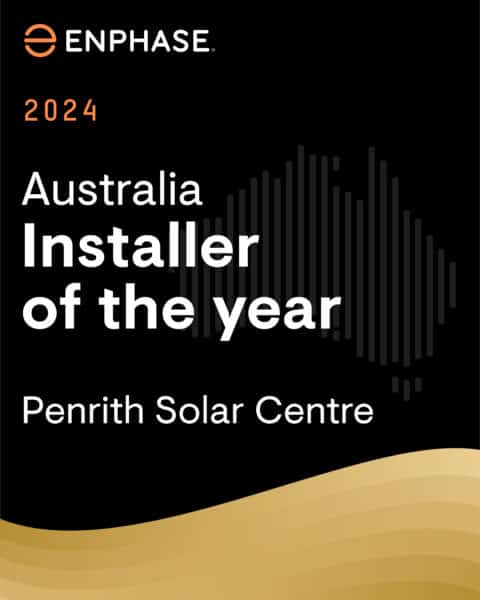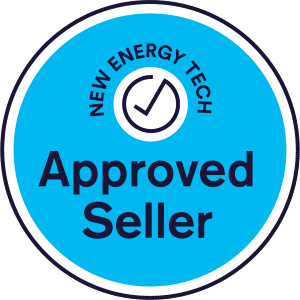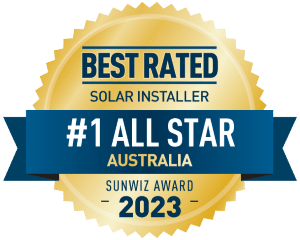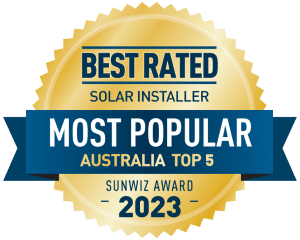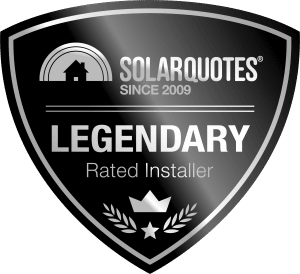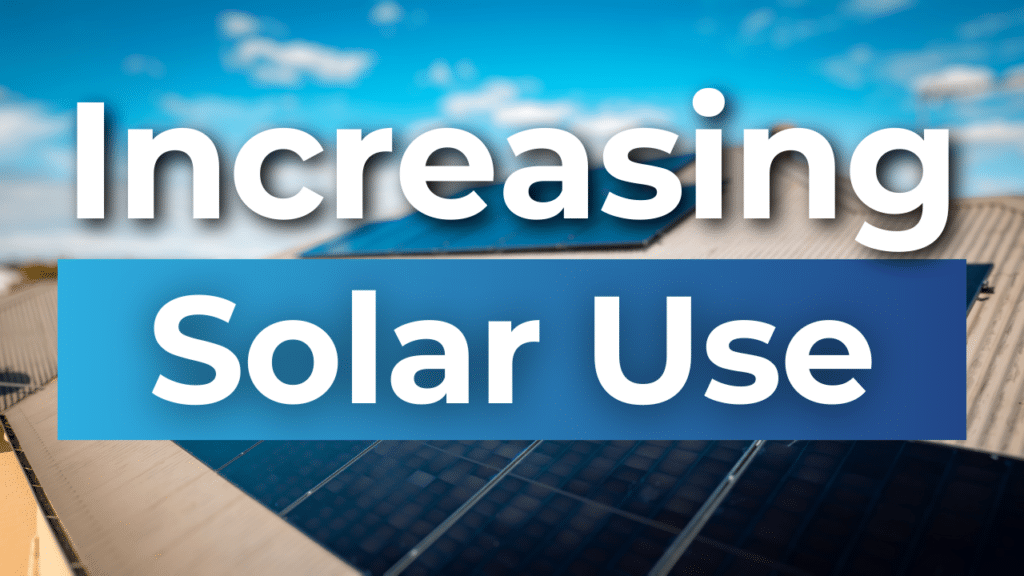
If you’re interested in a solar energy system, you’ve probably heard the term “self-consumption.” But what does it mean?
Simply put, it’s the electricity your solar panels generate that your home uses directly. It sounds simple enough, doesn’t it? Like all things in the solar industry, there’s more to it than that if you want the most out of your solar panel system.
At PSC Energy, we strive to be educators first. After all, the goal is Net Zero for all of Australia by 2050. In that spirit, we’re here to teach what self-consumption is and what possibilities it holds for customers like you.
In this article, you’ll learn the following:
- What is Solar Power Self-Consumption?
- Ways to Increase Solar Energy Usage
- Impact of Solar System Size on Financial Returns
By the end of this article, you’ll understand what self-consumption is and how you can practice it to save money and the environment.
What is Solar Power Self-Consumption?
This seems like it’s a simple and straightforward concept. Use your solar energy first to power as much of your home as possible.
This could be to power your fridge, run your dishwasher, or pump your pool. The key here is that the energy is used right when it’s produced.
Here’s how it works: during the day, when your panels are soaking up all that sweet, sweet sunshine, your home takes this power and uses it first.
If you have a battery storage system, you don’t have to send that surplus energy back to the grid. Instead, you can store it for later.
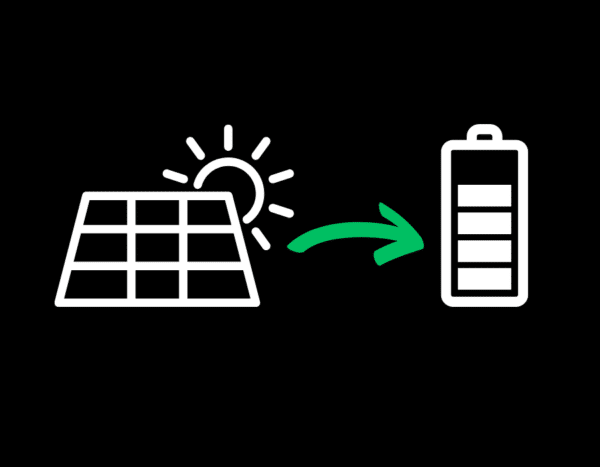
Imagine using that stored energy in the evening when the sun’s gone down or on a cloudy day when your panels aren’t producing as much.
Less Grid Dependence: Using more solar power reduces reliance on the grid, especially in areas with high electricity costs. Self-consumption gives you control over your energy use and supports a more sustainable future.
Example: Say your solar system generates 5 kilowatts (kW) in an hour, which is 5 kilowatt hours (kWh), and your home only needs 3kWh. The leftover 2kWh doesn’t just vanish. That extra energy, known as surplus energy, can earn you a credit on your electricity bill through what’s called a feed-in tariff. How much you get depends on your electricity retailer’s rates.
In short, solar self-consumption is all about making the most of the power your panels generate. You’ll be enjoying all those home-grown electrons as you produce, store, and consume your own energy.
If you’re interested in learning a bit more about shopping for a solar system, you might want to check out the following article titled, 6 Mistakes to Avoid When Buying Solar.
Ways to Increase Solar Energy Usage
Using the energy your solar panels produce is one of the most effective ways to enhance the financial benefits of your solar system.
By applying a combination of strategies, you can significantly increase your solar self-consumption and reduce reliance on grid electricity. We love helping customers do this.
Here are the key methods:
Shift Energy Loads
Using your solar energy during peak production hours (9 AM to 3 PM) is an easy and effective way to save money and get the most out of your system’s output. Scheduling appliances to run during these hours is how you do it.
- Hot Water Systems: Set your electric hot water system to operate during peak solar production hours. You also might want to consider upgrading to a heat pump system, which is more energy efficient.
- Pool Pumps: For those with swimming pools, scheduling the pool pump to run during the middle of the day can save money and optimise solar usage.
- EV Chargers: Electric vehicle owners can charge their vehicles during the day to use solar-generated power.
- Air Conditioning: Use your air conditioning system during peak solar hours to cool your home before the evening. Some systems allow remote activation for added convenience.
- Washing Machines & Dishwashers: Many modern models come with delay-start features, making it easy to schedule cycles during solar peak times.
- Smart Appliances: Advanced appliances often have scheduling features or can be connected to smart home systems, making them even easier to operate efficiently during solar production hours.
By shifting these energy loads, you can increase the percentage of solar power directly used in your home, significantly reducing your bills.

Battery Storage
Solar batteries are a great way to use more of your solar energy. They store extra energy produced during the day for nighttime or low-production periods like cloudy winter days. While batteries have an upfront cost, their benefits make them worth considering.
- Reduced reliance on grid electricity.
- Backup Power that provides electricity during outages.
- Virtual Power Plants (VPPs) offer additional financial incentives for using stored energy.
Investing in battery storage can make a significant difference, particularly for households with high nighttime energy usage.
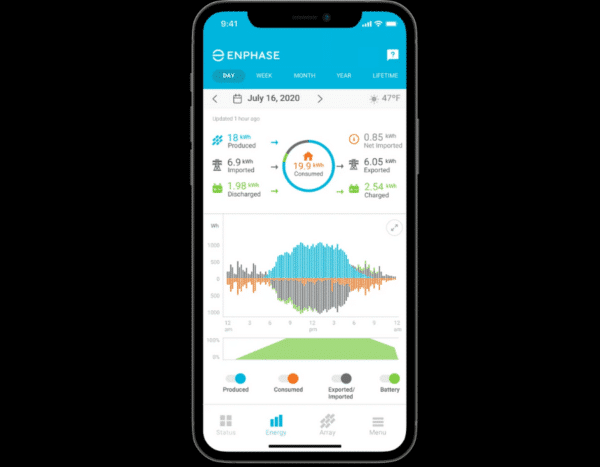
Energy Use Monitoring Systems
Energy use monitoring systems are essential for solar self-consumption. They’re not new, they’ve been around for a few years. They are extremely helpful.
These systems allow you to monitor and program the use of electricity in your home. Key benefits include:
- Real-Time Monitoring: Track the energy usage of your home and overall solar production. You’ll see where your solar energy is going.
- Program your energy to feed the home or export to the grid.
- Energy Insights: Gain a clearer understanding of your energy habits to make informed adjustments. In this case, knowledge is literally power.
Energy use monitoring systems help your appliances and solar system work efficiently together, boosting performance and savings.
When you invest in an Enphase microinverter system, access to the software is free. It’s an app for your smartphone called Enphase Enlighten. It helps you track and program how you use your energy.
If you’re interested in learning a bit more about the importance of monitoring and programming your energy, you might want to check out the following article titled, What is Consumption Monitoring?
Ready to go solar? Click here.
Impact of Solar Panel System Size on Financial Returns
Larger solar systems produce more electricity.
Finding the right balance between system size and household energy use is essential for financial savings.
Factors to Consider When Choosing a Solar System Size
Household Energy Usage
- Check how much energy your household currently uses to estimate how much solar power you can use directly.
Roof Space and Budget
- Make sure your roof has enough room for the size of the system you want.
- Keep in mind that bigger systems cost more upfront.
Feed-In Tariffs
- Look into the rates your electricity retailer offers for exported solar energy.
- Remember, lower feed-in tariffs mean exporting energy is less than using it.
Battery Storage
- Add a battery to store extra solar energy for nighttime use.
- Batteries help increase self-consumption and improve the financial benefits of larger systems.
If you’re interested in learning a bit more about your energy needs, you might want to check out the following article titled, How Much Solar Do You Need?
The Bottom Line: Getting Your Sunny’s Worth
Picking the right solar system size is all about matching it to your energy needs, goals, and budget. By reviewing your energy use and thinking about factors like feed-in tariffs and future demands, you can choose a system that saves you money and supports sustainability.
At PSC Energy, we help the fine folks of Western Sydney see the potential of solar every day. Self-consuming solar power is good for the environment and it’s good for your energy bills.

If you’re interested in learning about the rebate for solar, you might want to check out the following article titled, Understanding the Federal Government Solar Rebate in Australia: The STC Scheme in 2024.

